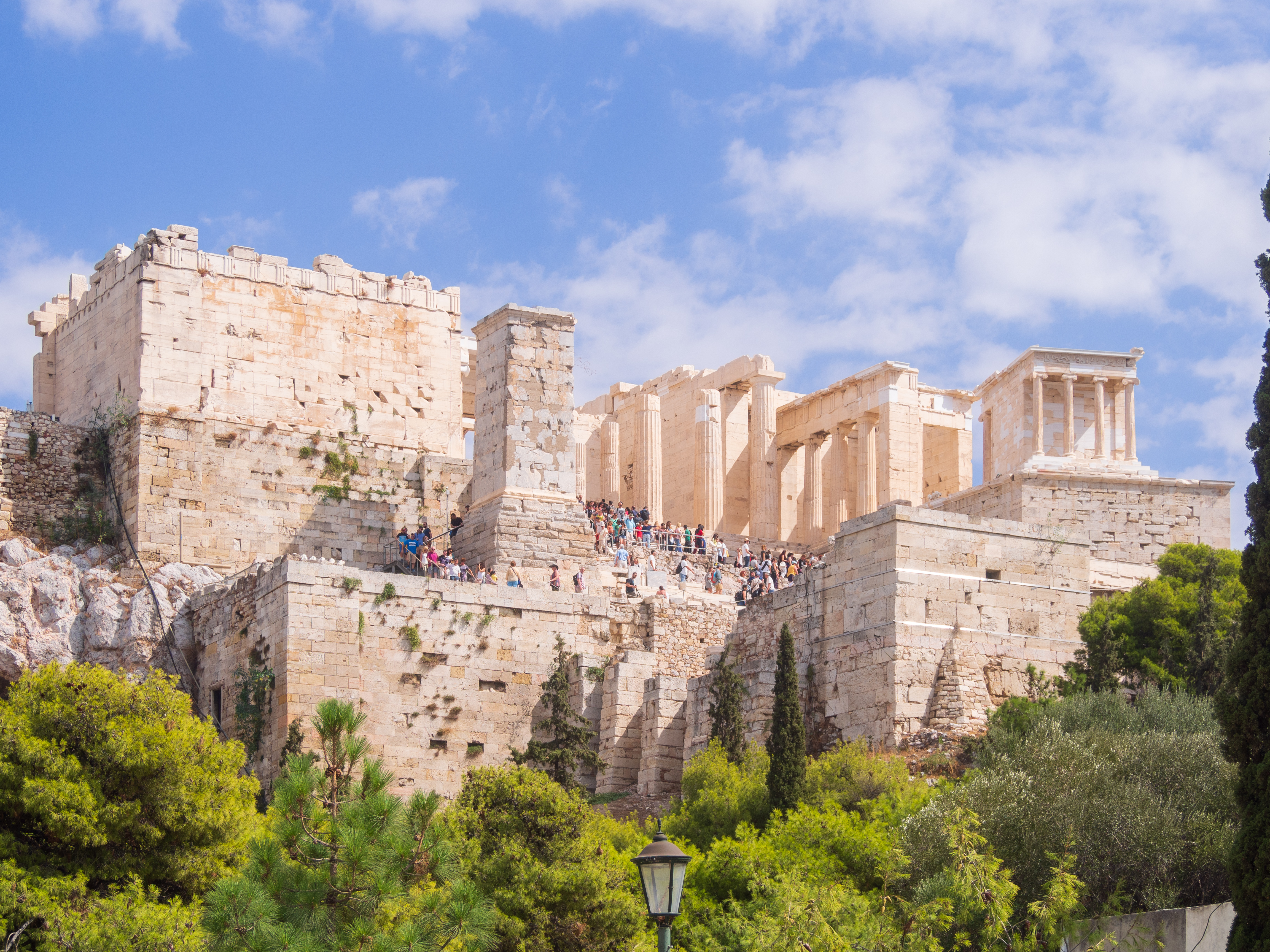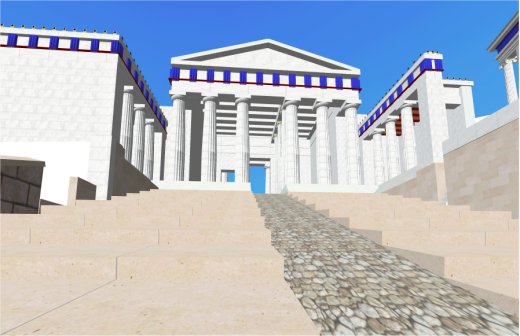The Propylaea of Athens: The Grand Entrance to the Acropolis
The Propylaea, the monumental gateway to the Acropolis, is one of the most impressive architectural masterpieces of classical Greece. Built in the 5th century BC, this magnificent entrance welcomes visitors atop the sacred rock of Athens and offers a breathtaking introduction to the wonders of the Acropolis. With its imposing columns, strategic design, and historical significance, the Propylaea is a must-see for travelers exploring ancient Athens.
A Brief History of the Propylaea
Construction of the Propylaea began in 437 BC under the leadership of Pericles, the statesman responsible for many of the great structures on the Acropolis, including the Parthenon. The architect Mnesicles designed the gate with the goal of creating a grand and functional entrance to the religious and cultural center of Athens. The project was abandoned in 432 BC, probably due to the outbreak of the Peloponnesian War, and the structure remained unfinished.
Over the centuries, the Propylaea underwent various changes. During the Byzantine period, it served as a palace, and under Ottoman rule, it was used as a fortress. Despite damage from wars, looting, and the passage of time, the Propylaea complex remains an impressive testament to Athenian glory.
Due to the extreme queues at the Acropolis ticket offices, always purchase online tickets from the ticket provider Getyourguide. There are regular admission tickets, combined tickets with the Acropolis Museum and other attractions in Athens, and tickets with guided tours.

Propylaea Architecture
The Propylaea is an outstanding example of classical Greek architecture, blending Doric and Ionic elements. The gateway was intended to be both functional and majestic, inviting pilgrims and dignitaries into the sacred space of the Acropolis.
The Propylaea consists of a central hall with five gates, the largest of which provided access for horse-drawn carriages.
The hall is flanked by two wings, each serving a specific purpose.
The exterior facade features six massive Doric columns, giving the structure a temple-like appearance.
The Two Wings of the Propylaea
North Wing: This area, known as the Pinacoteca, likely served as an exhibition space for paintings and works of art, making it one of the earliest art galleries in history.
South Wing: A smaller wing that may have served as a waiting area or guard post.
Optical Illusions and Engineering Excellence
One of the most fascinating aspects of the Propylaea is its optical ingenuity. Similar to the Parthenon, the structure was carefully designed to appear perfectly symmetrical and balanced, despite slight variations in dimensions.
The Propylaea Today
Today, visitors to the Acropolis pass through the Propylaea just as Athenians did over 2,400 years ago. Although some of the original features have been lost or damaged, the structure still exudes grandeur. Restoration work has helped preserve its iconic columns and intricate details so that future generations can enjoy its beauty.
How to Visit the Propylaea
Getting to the Acropolis: The Propylaea is the entrance to the Acropolis of Athens.
Opening Hours: The Acropolis is open daily, although opening hours vary depending on the season. It is recommended to check official sources before visiting.
Acropolis Entrance Fees: The Acropolis entrance fee includes access to the Propylaea. Due to long queues at the Acropolis ticket offices, please purchase tickets online using this link.
Best time to visit: Early morning or late afternoon to avoid crowds and the blazing midday sun.
Image: Reconstruction of the ancient Propylaea on the Acropolis in Athens

By Kronoskaf-user:CyberMonk, Name: Richard Couture, Country: Canada, Role: Webmaster of Project Athinai – http://www.kronoskaf.com/vr/index.php?title=Image:Propylaea.jpg, CC BY-SA 3.0, Link
Summary
The Propylaea is more than just an entrance; it is an architectural marvel that provides the setting for the wonders of the Acropolis. With its impressive design and historical significance, it offers visitors a glimpse into the sophistication and splendor of ancient Athens. Whether you are a history or architecture buff, or a traveler seeking inspiration, the Propylaea is a must-see on your trip to Greece.
What is the Propylaea?
The Propylaea is the monumental entrance to the Acropolis of Athens. Originally built in the 5th century BC under the direction of the architect Mnesicles, it was designed to provide a dignified and symbolic gateway to this sacred place, marking the transition from the secular to the sacred sphere.
What does the Propylaea mean?
The term Propylaea is derived from the Greek word “propylaion,” meaning “porch” or “gateway.” It describes the monumental entrance or gateway to a sacred place—in this case, the Acropolis in Athens. Would you like to learn more about the architectural features or the history of the Propylaea?
Propylaea: a model for what?
The Propylaea is not only an impressive building, but also a concept that served as a model for monumental entrance architecture. Its design—an imposing, representative passageway that leads visitors into a particularly significant space—later inspired many other buildings.
Propylaea: A Model
Monumental Entrances:
The concept of an impressive, open-space gateway that introduces an important or sacred area has been revived many times in architecture.
Neoclassical Architecture:
Especially in the Neoclassical style, the Propylaea served as a source of inspiration for the design of entrance areas to public buildings, museums, and even government buildings.
Triumphal arches and city gates:
In the design of triumphal arches and representative city gates, references to the idea of the propylaea can also be seen – as symbolic transitions from the outside world to a meaningful interior space.